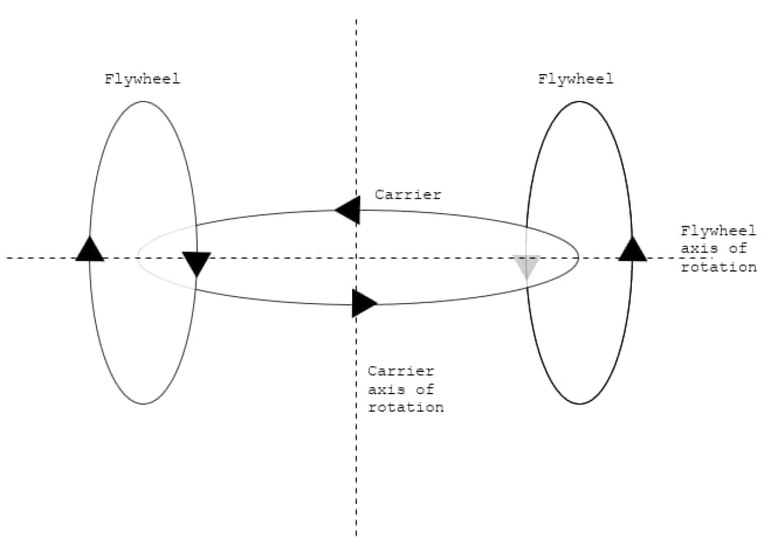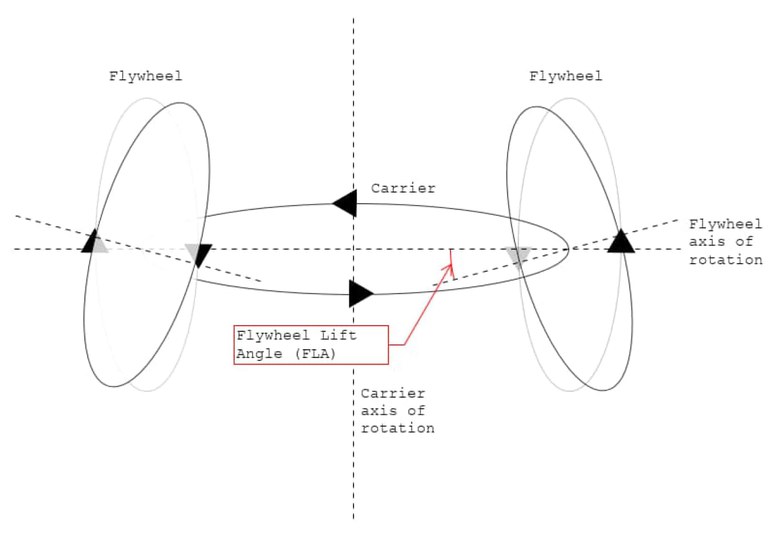RV Drive
"This is not 'anti-gravity' and I don't want you to use that term for it ever again."
Bjorn and I love to argue.
Bjorn said to me once:
"One can arrange pairs of gyroscopes in such a way that they produce a resultant force that can be measured and ultimately used as thrust."
And I laughed at him. (sorry Bjorn)
If the assertion is true it means that one could theoretically build an engine that is not based on expelling matter, though I do believe it is still based in Newton's Third law that every action has an equal and opposite reaction. An engine that does not require ejection of material would be a potential game changer, one that could potentially reach absurdly high velocities by applying constant thrust over a long period of time.
I figured this would be easy to debunk, so we agreed to build a test rig to investigate.
The Idea
The Idea is to create a measurable resultant force that can be used to accelerate a body in space by careful arrangement and rotation of a pair of high velocity flywheels.
The hardware for this Idea is licensed under the TAPR Hardware license. https://tapr.org/the-tapr-open-hardware-license/
The software for this Idea is licensed under the GNU GPL (General Public License)
https://www.gnu.org/licenses/licenses.html#GPL
You may use anything you find here as long as you adhere to the license terms. Please read both before using anything from this site as you are expected to adhere to the terms strictly. You may reproduce, redistribute, and use this idea for free until/unless you either make a profit, or your product that utilizes theIdea has a sales equivalent to 333.33 ounces of gold in a given year, at which point you are obliged to pay 2% of the profit or revenue to the original idea creator.
Any changes/improvements you make made are required to also be published under the same license as a way of giving back to the community.
Theory?
Definitions.
It can get confusing when describing this effect because we have flywheels "spinning" at high speed, and also "rotating" around an axis perpendicular to the spin axis of rotation. In an effort to be clear about which rotation and axis we are referring to we shall make some arbitrary definitions.
A pair of flywheels, rotated on a carousel.
For the purposes of this discussion I shall refer to :
- the weight of the test rig as measured by a load cell "Apparent Weight".
- any vertical component of a force acting on the test rig as a whole as the "Total Lift Force".
- any vertical component of a force acting on a component of the test rig as a "Component Lift Force".
- the high speed spinning disks/wheels as "Flywheels"
- the axes or rotation of the Flywheels as the "Flywheel Axis of Rotation".
- the physical device/component that the Flywheels are mounted to as the "Carousel"
- the axis of rotation of the Carrier as the "Carousel Axis of Rotation".
- the plane described by the Flywheel Axis of Rotation rotating about the Carrier Axis of Rotation as the "Carousel plane".
Additionally, there is debate between @Bjorn Lampson and myself over another aspect of the project. He asserts there needs to be the ability for each flywheel to change the angle of their Flywheel Axis of Rotation to be different to the Carouselr Axis of Rotation and Carousel Plane referring to this as the "Flywheel Lift Angle".

The very need for an Flywheel Lift Angle is hotly debated between Bjorn and myself. Bjorn was adamant it be included. If there is any measurable force generated we can investigate the optimum lift angle required, it any.
Next: The Mark I